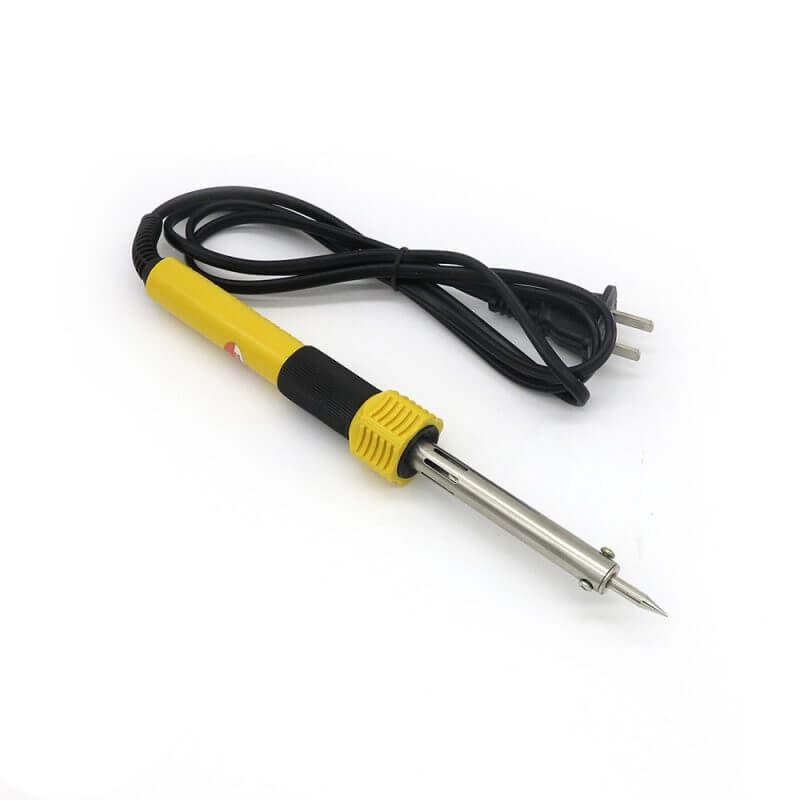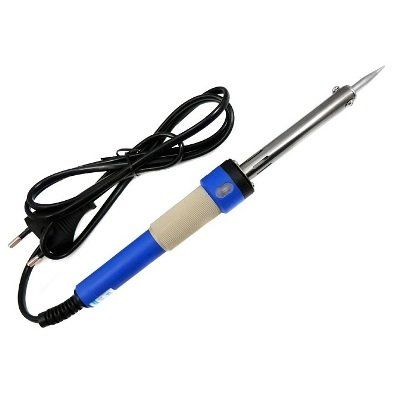
Soldering Iron: An Essential Tool for the Modern Maker
There's a whole universe hidden within the electronics we use daily, a world of intricate connections and components that allow our devices to perform their magic. A key instrument in navigating and shaping this universe is the humble soldering iron. It's more than a tool; it's an extension of your creative spirit, a bridge to the tech-centric future.
What Is a Soldering Iron?
A soldering iron is a handheld tool used in soldering. It supplies heat to melt solder, which cools to form a connection between two workpieces. The soldering iron finds its usage in a wide variety of applications, from DIY electronics repair to creating custom jewelry. The tool is comprised of an insulated handle and a heated metal tip. Most soldering irons plug into a wall outlet for power, although there are cordless, gas-powered versions available.

Anatomy of a Soldering Iron
Let's dive into the soldering iron's anatomy. The most crucial part is the tip – made of a sturdy metal alloy, usually copper, coated with iron to resist corrosion. The tip comes in various shapes and sizes: conical, chisel, and more, each designed to handle a different type of soldering job. It's heated by an electric heating element within the tool's body.
The handle, made from an insulating material, provides safety to the user from high temperatures, while the power cord or gas chamber supplies the necessary energy to heat the tool.
The Art of Soldering
Soldering, at its core, is a straightforward process. The iron is heated, the solder is melted onto the connection point, and the solder is allowed to cool, creating a secure and conductive link. Yet within these simple steps lie techniques and nuances that distinguish a casual user from an expert.
Soldering requires a clean workspace, a steady hand, and the correct amount of solder. Overdoing it can lead to blobby connections, potentially damaging components or creating shorts. Underdoing it can result in weak connections that might fail over time.
Types of Soldering Irons
Soldering irons come in various types, suited to different kinds of work.
Simple Irons: These are the most basic and economical type, suitable for light work and beginners. They plug into an outlet and heat up, but do not provide any temperature control.
Soldering Stations: These are professional-grade tools, consisting of a station that controls temperature and a detachable iron. They offer a high degree of control and consistency, making them perfect for complex, delicate projects.
Cordless Irons: These are powered by gas or a battery. They're portable and useful in situations where an outlet is not available. However, they generally offer less power and precision than their corded counterparts.
Safety First
While soldering is a fun and rewarding hobby, it's essential to keep safety in mind. The iron gets extremely hot, enough to cause severe burns, so handling it properly is crucial. Always hold the iron by its handle, never by the metal parts.
Additionally, soldering produces fumes that can be hazardous when inhaled. Always solder in a well-ventilated area, and consider using a fume extractor. Use lead-free solder if possible, as it's less toxic.

Getting Started with Soldering
If you're interested in getting started with soldering, a basic kit with an iron, solder, and a stand is a great place to begin. Many kits also include other handy tools like tweezers, desoldering pumps, and cleaning sponges.
Remember, like any skill, soldering takes time to master. Don't be disheartened if your first few attempts are less than perfect. With patience and practice, you'll soon be able to create durable and reliable solder joints.
Conclusion
The soldering iron, while seemingly simple, is an indispensable tool for anyone looking to work with electronics or delve into the world of DIY repairs. Understanding its structure, operation, and safe handling can unlock a new realm of possibilities, from fixing a broken gadget to creating your own electronic marvel. Whether you're a seasoned professional or a curious beginner, the soldering iron is your trusty companion in the journey of creation and innovation.
Appreciate the creator